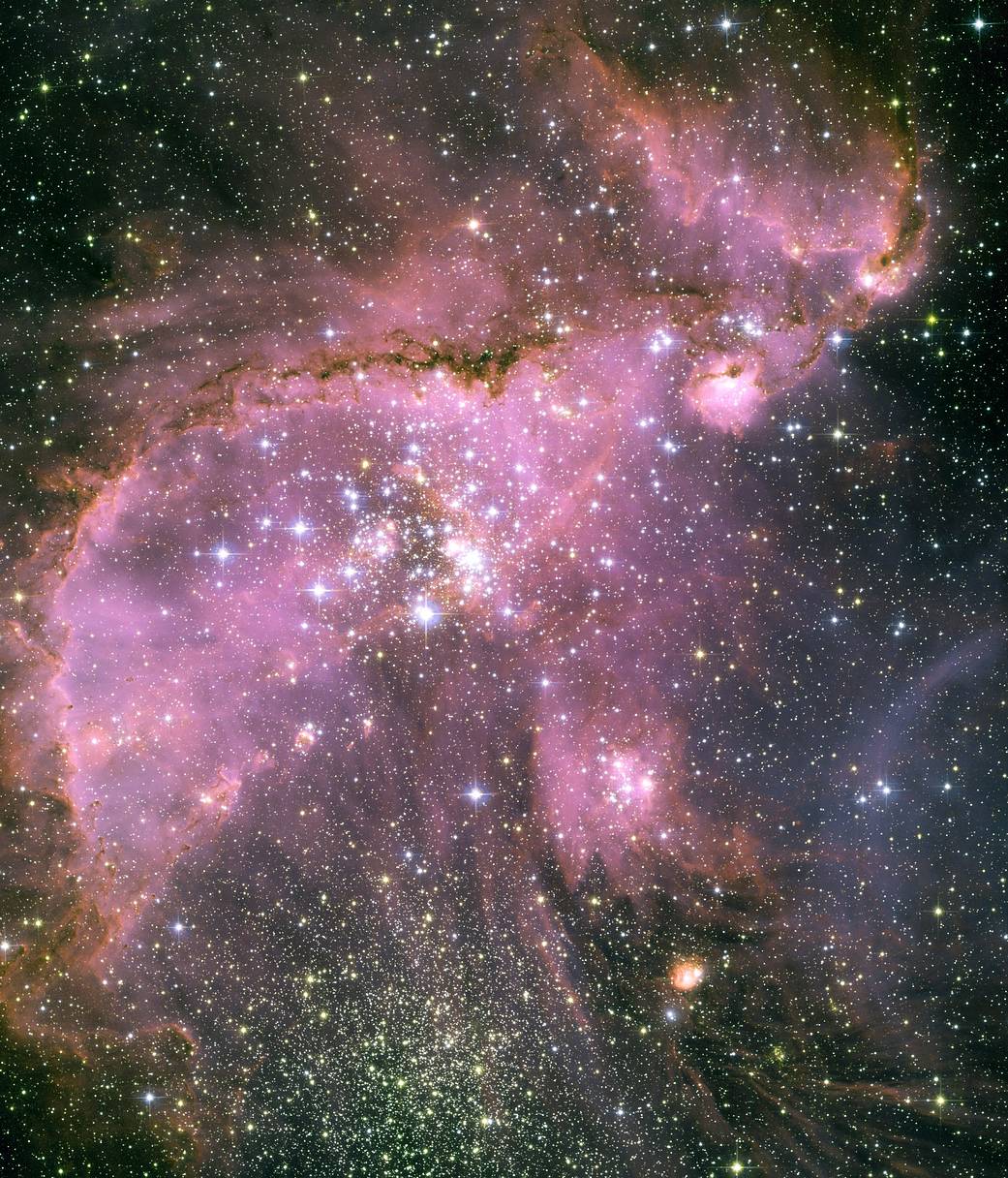This view of one of the most dynamic and intricately detailed star-forming regions in space, located 210,000 light-years away in the Small Magellanic Cloud (SMC), a satellite galaxy of our Milky Way, was taken by the Hubble Space Telescope. At the center of the region is a brilliant star cluster called NGC 346. A dramatic structure of arched, ragged filaments with a distinct ridge surrounds the cluster.
A torrent of radiation from the cluster’s hot stars eats into denser areas creating a fantasy sculpture of dust and gas. The dark, intricately beaded edge of the ridge, seen in silhouette by Hubble, is particularly dramatic. It contains several small dust globules that point back towards the central cluster, like windsocks caught in a gale.
Energetic outflows and radiation from hot young stars are eroding the dense outer portions of the star-forming region, formally known as N66, exposing new stellar nurseries. The diffuse fringes of the nebula prevent the energetic outflows from streaming directly away from the cluster, leaving instead a trail of filaments marking the swirling path of the outflows.
The NGC 346 cluster at the center of this Hubble image contains dozens of hot, blue, high-mass stars, more than half of the known high-mass stars in the entire SMC galaxy. A myriad of smaller, compact clusters is also visible throughout the region.Image Credit: NASA, ESA and A. Nota (STScI/ESA)
2 min read



























